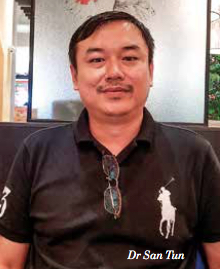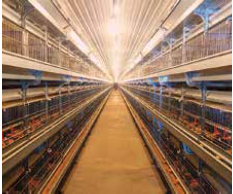Top Farm plans to raise layer capacity by installing modern evaporative-cooled layer houses to improve egg quality, productivity and protect the flocks from infection threats.

Dr San Tun, managing director, said the layer industry has grown impressively and now egg consumption by Mandalay’s urban population surpasses 80 pieces/person/annum. Also, demand from bakeries is growing.
The company operates a layer farm in Pyin Oo Lwin with 45,000 Hy-line brown layer hens. Egg productivity is on par with company standards. However, the farm faces land constraints barring it from scaling up. As a result, the company is looking into new sites to grow the business and has chosen to construct a new layer farm in Myo Thar township, 57 km from Mandalay city limits.
The Myo Thar farm is large enough to support future expansion and avoid conflicts with communities due to its secluded location. The project targets having 100,000 birds by the end of 2019. The project worth US$2 million has a starter house and three laying houses.
Starter house
Construction of the first starter house was finished in January while the first layer house will be finished later in March. The starter house (73×6.7×3.5m) with two rows and 4 tiers/row can hold 21,000 chicks. The house is fully automatic and manure is removed by belt. It applies a whole-house brooding system that uses two box heaters with 250,000 BTU/hour capacity each.
The house is fitted with six 1.5-hp fans with a flow rate of 9.36 sq m/hour/bird, wind speed 2.9 m/s and static pressure at 0.20 inches of water and a total cooling pad area of 86.4 sq m. Stocking density is 26 birds/cage –315 sq cm/bird.
The house is fitted with sensors to ensure a uniform temperature to keep the birds comfortable.
Poor temperature distribution indicates problems such as air leakage. Incorrect temperature affects feed intake which triggers either excessive or inadequate feed consumption. This affects pullet weight, flock uniformity and longevity of the hens, said Dr San Tun.

(5th left) Dr San Tun together with production team
The pullets are mainly used internally with only a small amount sold to business alliances. By the end of 2019, an egg conveyor system and grading facility will be constructed and operable.
Production house
The first production house will be operable by April.

UV-S680 starter cages stocking 21,000 birds/ house, space 315 sq cm/bird
At 16 weeks old, the pullets will be moved to production houses. The houses (6x108x3.5m) are fitted with Univent UV600 cages with two rows, 4 tiers/row, for a total of 20,480 birds. Each cage holds eight birds, space/bird 450 sq cm.
Each layer house is fitted with chain feeders and an egg conveyor. Eight 1.5- HP exhaust fans produce a flow rate per bird of 12.62 m/hr, air speed 4.14 m/s and static pressure of 40 inches of water, with a total cooling pad area of 108 sq m. Air speed and light intensity is regularly monitored, said Dr San Tun.
Wind speed, temperature and air quality in a layer house is important because it affects feed intake which is directly related to egg productivity and quality. Poor air quality together with fine particle dust works against layer hen productivity and egg shell quality. Sufficient air movement to remove heat, moisture, CO2 and ammonia is associated with good sellable eggs.
Manure is removed from the house once a day. Traders pick up the manure from the farm to sell to nearby orchard growers. They are required to abide by biosecurity guidelines beginning with disinfecting the truck prior to entry and driving along permissible routes to loading points.
Biosecurity
Top Farm has created biosecurity operating procedures and standards covering all aspects of production such as personnel and traffic flow, manure removal, procedures to manage vehicles entering into the facility, equipment handling and disinfection, and manure removal. Staff are trained to ensure biosecurity practices are consistently implemented.
Marketing
Eggs are sold to dealers in wet markets in Mandalay city and nearby areas. There is strong competition for the Mandalay market which is surrounded by major egg producers in Kyauk Mae, Taunggyi and Pyin Oo Lwin.
Feed business
The company operates a feed mill with 1,200 tonnes/shift capacity, producing broiler and layer diets to supply markets in nearby Mandalay.
Apart from improving capacity utilization, Top Farm will build a chemistry lab in Q2, 2019 to strengthen QC capability. Meanwhile, it is refining feed formulas to improve feed cost per unit of gain for its customers.
Top Feed is beefing up quality control of raw materials. Testing for mycotoxins is done internally and some samples are sent to 3rd party labs. It offers broiler and layer feed in pellet and crumble form.
Regulations overseeing the use of antibiotic growth promoters and in-feed medication have not been fully enforced by the Myanmarese authorities yet. Top Feed is aware of the risk of antibiotic resistance which could compromise the food chain and voluntarily uses antibiotics prudently.
A coccidiostat is used in pre-starter and starter feed during the first 14 days. Ionophores and non-ionophores are applied and rotated every four months to prevent anticoccidial resistance. Acidifiers and probiotics are also applied in grower and finisher feed.
